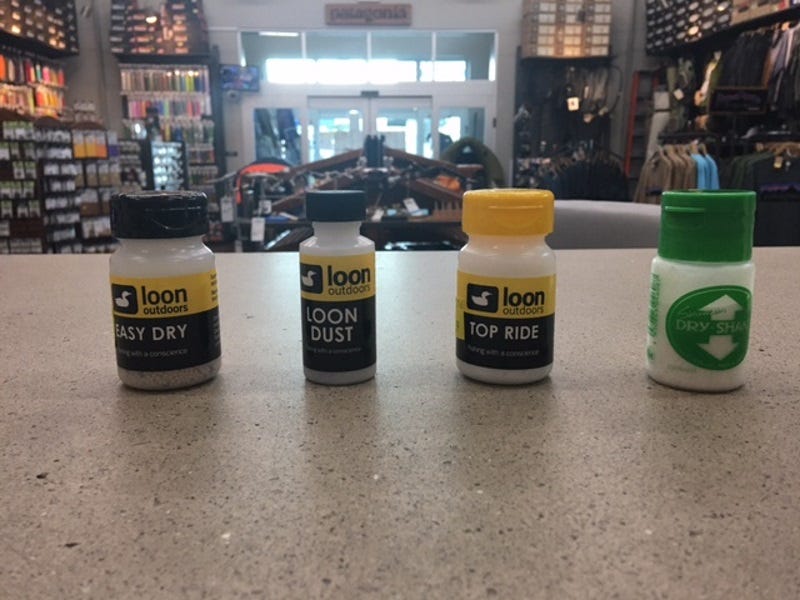Using Dry Fly Desiccant


So, after a long time away from being behind the counter in a fly shop and coming back to it, my favorite topic: dry fly desiccant.
I'm pretty surprised by how many fly fisherman don't use this product, there are many types and brands like Loon, Umpqua etc... Loon makes Easy Dry, Loon Dust, and Top Ride, while Umpqua has Dry Shake, Dry Magic, and many more.
You can buy Loon Dust online right here.
Each a bit different, and all work in a similar way. I prefer Top Ride by Loon, but that's just me and to each his own. So, what I really want to impart here is this, don't be a "Perpetual Ginker." Yeah, I just made that up, but here's what it means:
Reapplying liquid floatants like Gink or others, tend to, in most situations, make the flies sink. It can bind the fibers, hackles and hair of your dry fly together, thus reducing the surface area of the fly, and therefore sinks the fly.
So, here's the trick. What you want to do is apply a small amount of liquid floatant to the fly before you actually fish the fly. I usually put the floatant on my thumb and forefinger (not too much), and pat the fly using the floatant on your fingers. Next step? Fish the fly for a while.
You can buy Loon Top Ride from us online here.
If you catch a fish, or you notice that the fly starts to sink, here's the magic of the products mentioned above: open the lid of the jar, stick the fly in and shake it well.
You can even leave the fly attached to the leader. Remove the fly and blow of the excess. Now, on your next next couple of false casts, make them a little bit "vigorous." This allows all the fibers of the fly to separate again, creating more surface area, and removing a large amount of the moisture.
Check out our accessories online here--we've got a lot of different floatant options available.
Do all of that... and bam!!! You have one high-floating, fish-catching fly.
I will not typically add more liquid floatant after the first application, but instead just stick with using the desiccant while I am fishing that fly.
Here's another trick that pairs well with all the info we’ve spoken about bring a comb.
With flies that are larger, or have "poly" wings like the chubby Chernobyl, I carry a basic hair comb and I will comb out the wings after applying floatant/desiccant to further separate the fibers and create more surface area. Combing makes a huge difference on how your fly floats and fishes.
Note: You can use the same combing tactic with yarn indicators, and it will help your indicator ride higher and more visibly as well.
So, there you go. Again, using desiccant is not a new thing, but it remains a vastly overlooked product. If you take the time to use this system, you will reap the rewards--higher floating, longer floating great drifting bugs equal more fish and easier to see flies, who can argue that?
